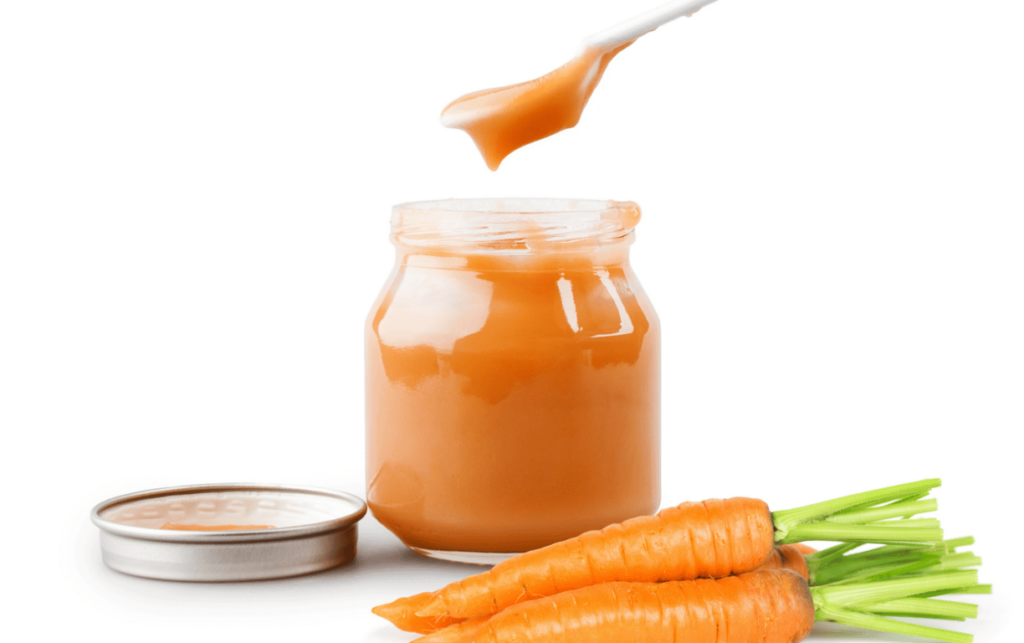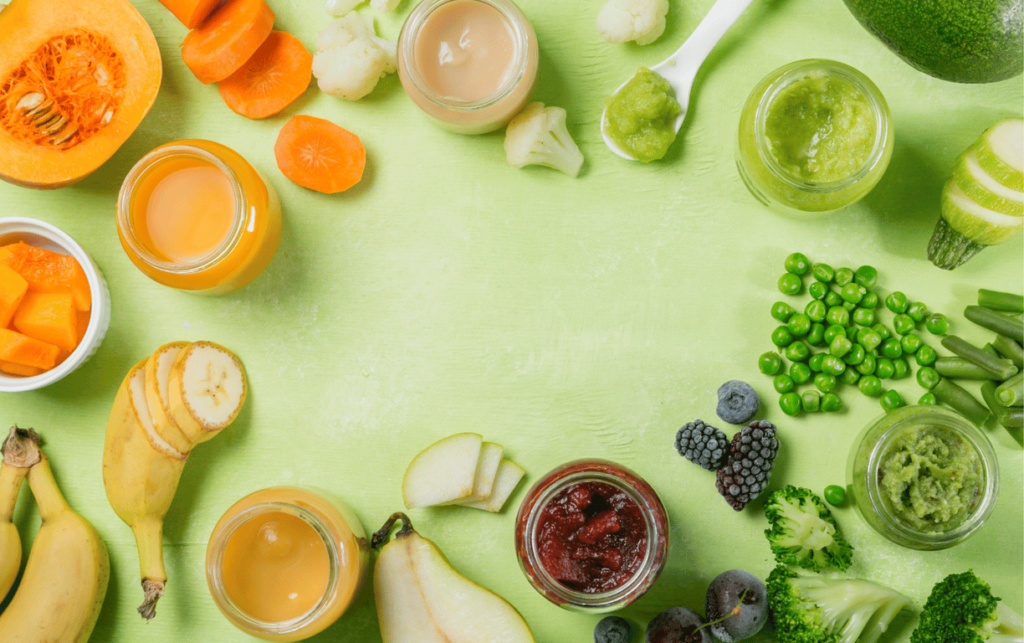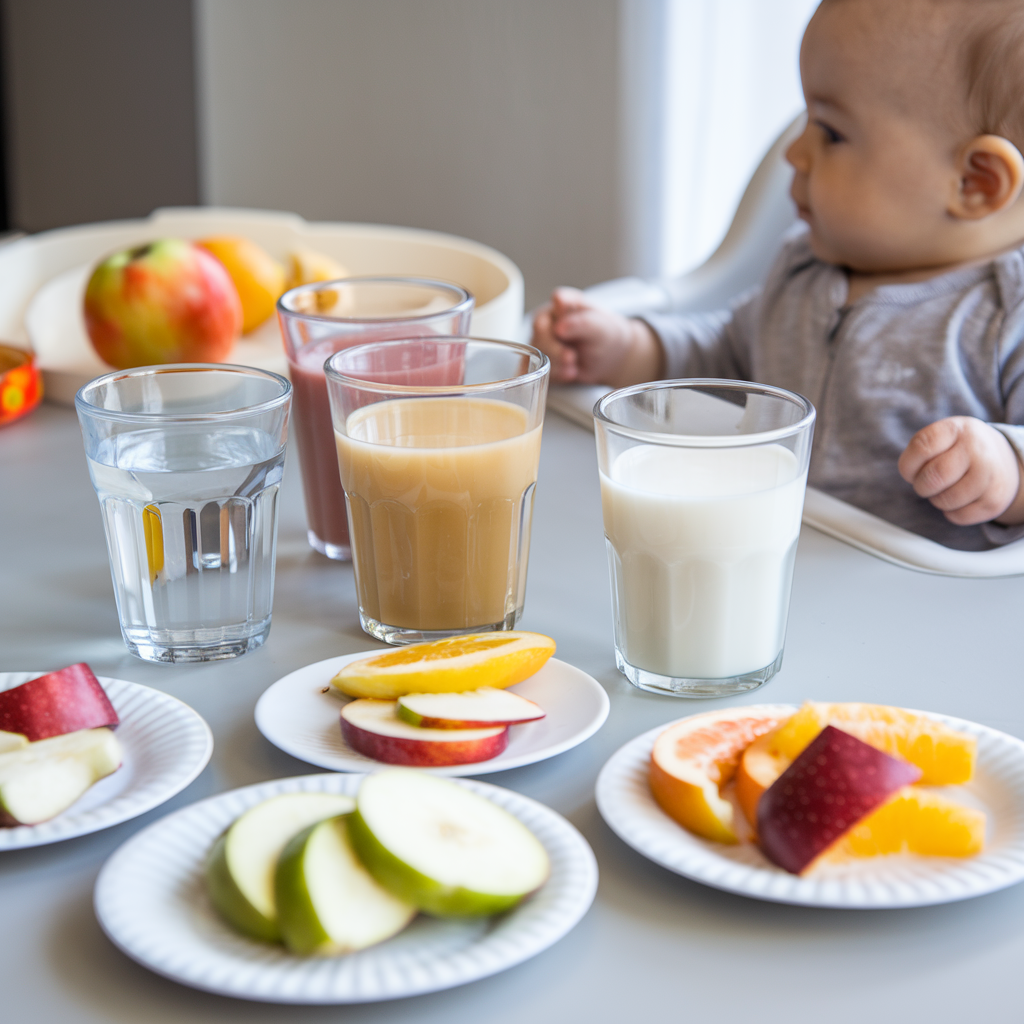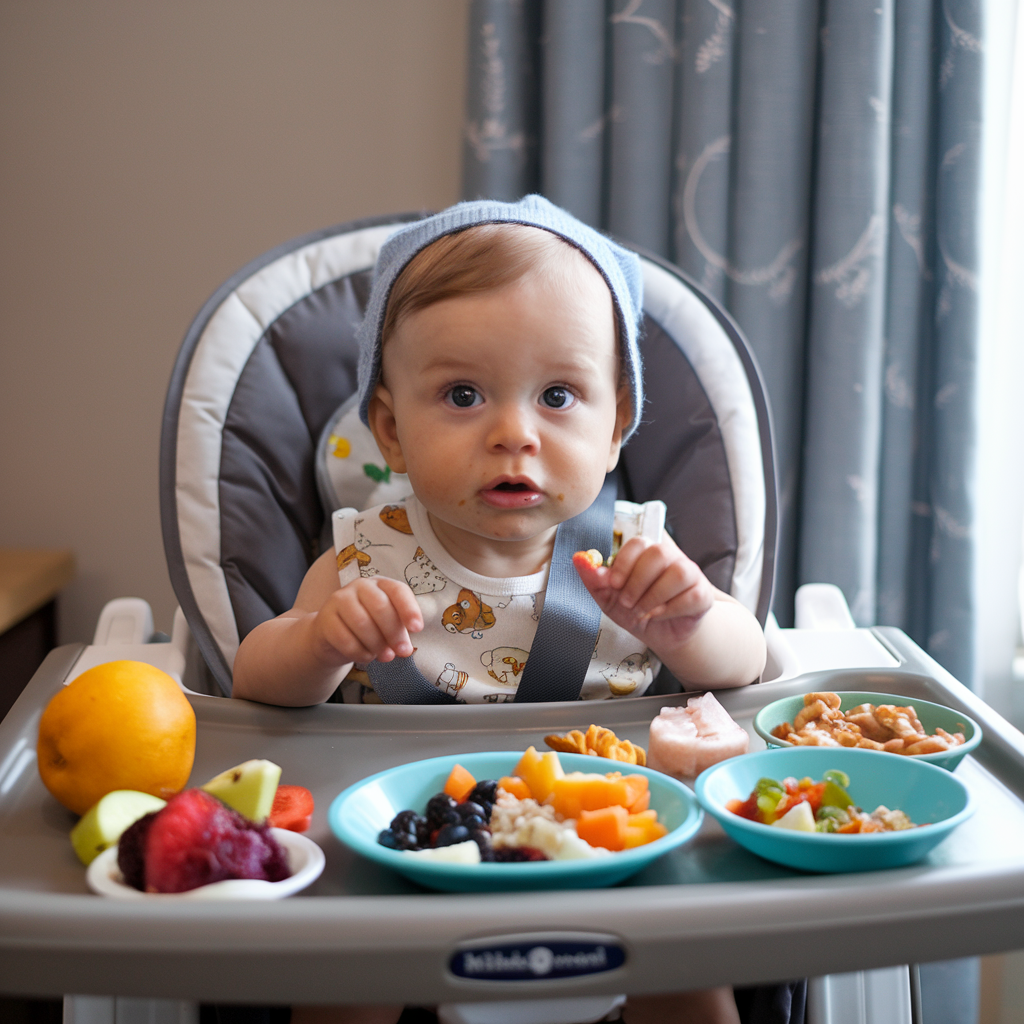Physical Address
304 North Cardinal St.
Dorchester Center, MA 02124
Physical Address
304 North Cardinal St.
Dorchester Center, MA 02124
Finding the right lunch ideas for your baby can be a fun and rewarding experience. With so many nutritious options available, you can easily create meals that are both tasty and healthy for your little one. From simple finger foods to balanced meals, there’s something to suit every baby’s appetite and growth needs.

It’s important to offer a variety of foods to ensure your baby gets the nutrients they need. This variety can help introduce different textures and flavors, making mealtime enjoyable. You’ll find inspiration for meals that are easy to prepare and perfect for busy days or at-home lunch breaks.
As you explore easy lunch ideas, remember that convenience does not mean sacrificing nutrition. You’ll soon discover exciting recipes that can be prepared in advance, making tasty lunchtime solutions a breeze.
When it comes to feeding your baby, nutrition is key. Proper nutrition helps support growth and development. Babies require a mix of vitamins, minerals, and healthy fats.
Key Nutrients for Babies:
Balancing these nutrients is important for your child’s health.
Here are some tips for feeding your baby:
Remember, mealtime can be a fun learning experience. Sing songs or make funny faces while eating! This helps create a positive view of food.
As you prepare meals, think about easy recipes that both you and your little one will enjoy. You can find some easy and healthy daycare lunch ideas for even more inspiration.
Feeding your baby healthy meals lays the foundation for a future of good habits. Enjoy this special time with your little one!
Introducing solids is an exciting step for you and your baby. It’s important to know the right age, identify readiness signs, and ensure your baby gets the nutrients they need.
Most experts recommend starting solids between 4 to 6 months. At this stage, your baby is developing the ability to sit up and has better head control.
It’s essential to wait until your baby is ready. If you introduce solids too early, it may increase the risk of allergies or digestive issues.
You can start with soft foods that are easy to mash. Foods like pureed fruits and vegetables are excellent choices to begin with.
Look for certain signs to determine if your baby is ready for lunch. Signs include:
Trust your instincts. If your baby is showing these signs, it may be time to introduce lunches. Starting with small amounts is best.
Your baby needs specific nutrients for healthy growth. Focus on:
Offering a variety of foods can help your baby develop a taste for different flavors and textures.
When it comes to feeding your baby, having a variety of lunch ideas is essential. Different categories can help you choose the right meal based on your baby’s preferences or needs. Here are some helpful categories to consider.
Purees and mashes are a great starting point for babies who are just beginning to explore solid foods. You can easily prepare these dishes at home using simple ingredients. Some popular options include:
These purees make great base meals. You can even mix them with other ingredients for variety.
Once your baby is ready for more texture, finger foods are a fun option. These allow little ones to practice their grasping skills. Here are some finger food ideas:
These foods encourage self-feeding and can be a fun way to explore different flavors.
Sometimes, you just need quick and easy options that require minimal preparation. Here are some go-to meals:
These options can be made in advance and are perfect for busy days.
If you’re looking to include more plant-based meals for your baby, there are plenty of delicious vegetarian options. Consider these:
These dishes not only provide essential nutrients but also introduce your baby to a variety of tastes.
Creating simple, nutritious, and tasty lunches for your baby can be fun and rewarding. These ideas showcase colorful ingredients that are easy to prepare and appealing to little ones.
Fruits and veggies are key to your baby’s nutrition. They’re packed with vitamins and minerals. Try mixing soft fruits like bananas or avocados with cooked vegetables like sweet potatoes or carrots.
Here are some ideas:
These combinations offer a variety of flavors and textures, making lunchtime exciting for your baby.
Protein is vital for your baby’s growth and development. You can make fun and tasty meals using protein-rich ingredients.
Consider these options:
These meals not only provide protein but also support your baby’s energy levels throughout the day.
Grains are an excellent source of energy for your baby. Making grain-based lunches can be simple and tasty.
Here are a few ideas:
These options support balanced nutrition while letting your little one explore different flavors.
When deciding between store-bought and homemade baby food, consider factors like convenience, nutrition, and your schedule. Each option has its benefits and drawbacks, making it important to choose what best fits your needs.
Pre-made baby food is a great choice for busy parents. You might prefer store-bought options when you need quick solutions for on-the-go meals.
Many store-bought brands now offer high-quality, natural ingredients. They are convenient, portable, and often ready to serve straight from the jar. This can save you valuable time, especially during hectic days.
Look for brands that prioritize organic ingredients and avoid artificial additives. Some options even focus on specific dietary requirements. This can help you keep your baby’s diet balanced without the extra effort of cooking.
When shopping for store-bought baby food, keep an eye on a few important aspects. Start by checking the ingredient list. Aim for short lists with recognizable ingredients.
Key Factors:
Additionally, consider the packaging. Choose glass jars or BPA-free containers for safer storage. Remember, these choices will help ensure your baby is getting nutritious food, even when you opt for shortcuts.
Ensuring your baby’s meals are prepared and stored safely is key to keeping them healthy. You want to make sure everything is done right, from cooking to storing.
Always wash your hands before you prepare any food. Use soap and water for at least 20 seconds. This helps to keep germs at bay.
When cooking, keep raw and cooked foods separate. Use different cutting boards to avoid cross-contamination. It’s important that you cook foods to the right temperature. For example, meat should reach at least 165°F.
Make sure any fruits and vegetables are rinsed well. This removes dirt and pesticides. You can peel them if you’re worried about safety.
Finally, store any leftovers in airtight containers. Label them with dates to track freshness.
When it comes to storage, keep the baby food in the fridge or freezer. Fresh baby food can stay in the fridge for up to three days. Freeze meals in small portions to make mealtime easier.
Using ice cube trays is a great way to portion food. You can freeze puree in cubes and then transfer them to bags. This keeps the food fresh for about three months.
When reheating, make sure the food is hot all the way through. Stir it well to eliminate any cold spots. Use a microwave-safe container or steam on the stove.
Always check the temperature before serving. Aim for meals that are comfortably warm.

When it comes to baby lunch ideas, allergies and sensitivities are important factors to consider. Knowing common allergens can help you choose safe foods for your baby. Understanding how to introduce potential allergens can also minimize risks.
Several foods are known to cause allergies in children. These include:
If your baby has never tried these foods, it’s best to introduce them one at a time. Watch for any signs of an allergic reaction, such as skin rashes, hives, vomiting, or difficulty breathing. If you notice any concerning symptoms, contact your pediatrician.
When introducing potential allergens, timing and method matter. It’s recommended to begin around six months of age, as this is when many babies start solid foods.
Start with small amounts of the allergenic food. For example, you might offer a tiny spoonful of peanut butter or scrambled eggs. Wait two to three days before introducing another new food. This allows you to monitor for any adverse reactions.
Keep a food diary to track what your baby eats and any reactions that occur. This will help you keep clear records for your doctor if needed.
Baby led weaning is a popular approach to introducing solid foods to your little one. It encourages self-feeding and helps your baby learn about different textures and flavors right from the start. Here’s what you need to know.
Baby led weaning (BLW) means letting your baby feed themselves instead of spoon-feeding. Usually, babies start this method around 6 months of age, when they can sit up and grasp food.
With BLW, you provide whole food pieces that are easy to hold, like soft fruits and cooked vegetables. This allows your baby to explore food at their own pace. You can serve foods such as steamed broccoli, sweet potato wedges, or banana slices.
This method supports your baby’s development and encourages them to enjoy a variety of flavors. It also can help establish healthy eating habits early on.
When starting baby led weaning, safety is key. Always supervise your baby while they eat to prevent choking. Start with soft foods that can easily break apart in their mouth.
You can create a list of great first foods, such as:
Offer foods that are rich in iron too, like lentils or small pieces of meat. Iron is important as your baby’s natural iron stores may decline after 6 months.
Remember, mealtime should be relaxed and fun. Allow your baby to explore and enjoy the experience. It’s all about building confidence and independence with food.

Lunchtime can sometimes feel like a battleground. You might face challenges like fussy eaters and the need for consistent mealtime routines. Here are some practical tips to help you navigate these situations.
Dealing with fussy eaters is common. To make lunchtime more enjoyable, try these strategies:
Establishing consistent mealtime routines can help create a calm and enjoyable lunch experience. Here’s how you can do this:
These strategies can help you tackle lunchtime challenges effectively.
When you’re busy, it’s important to make sure your baby gets nutritious meals. With some planning, you can prepare healthy options that are easy to pack or take along with you.
When packing lunches for daycare, focus on balanced meals that include protein, healthy fats, and fruits or vegetables. Foods should be easy for your baby to eat and safe to chew.
Here are some great lunch options:
Make sure to keep cold items in a small cooler to maintain freshness. Using divided containers can help keep food separated and appealing.
Traveling with a baby means you need to have meals that are easy to carry and consume. Focus on portable and nutritious snacks and meals.
Good travel-friendly ideas include:
Prepare these meals ahead of time and pack them in small containers. This way, you can feed your baby without hassle while on the go.

Keeping your baby hydrated is essential for their growth and overall health. Understanding what beverages are suitable for them can help ensure they stay happy and healthy.
Water plays a crucial role in your baby’s hydration. For babies under six months, breastmilk or formula provides all the necessary fluids. Once they start eating solid foods, you can introduce small amounts of water.
Aim to offer your baby water throughout the day, especially in hot weather or after physical activity. A few sips during meals can encourage good hydration habits. Always use a sippy cup or straw to make it fun and engaging.
For babies older than six months, you can give about 4-8 ounces of water a day. Adjust this based on their activity level and climate. Avoid sugary drinks to promote healthy habits.
Juice can be part of your baby’s diet, but moderation is key. It’s best to wait until they are at least one year old before introducing fruit juices. When you do offer juice, choose 100% fruit juice without added sugars.
Limit juice to about 4 ounces per day. It’s also a good idea to dilute juice with water. This can help reduce the sugar intake while still offering some flavor.
Avoid giving your baby sugary drinks, sodas, or flavored waters. These can lead to cavities and unhealthy habits. Unsweetened plant-based milk can be introduced after one year, but check with your pediatrician for guidance on alternatives.

When planning your baby’s lunches, it’s important to create a balance between variety and consistency. This helps ensure they enjoy their meals while getting the nutrients they need.
Offer Different Flavors and Textures
Try to include a mix of flavors and textures each week. Here are some ideas:
Stick to Routine
While variety is important, babies also thrive on routine. Try to keep some staple items they like. For instance:
Gradually Introduce New Foods
Introduce new foods slowly. Pair something new with a familiar favorite. This can help your baby feel more comfortable trying different tastes.
Keep Track of Favorites
Make note of which meals your baby enjoys the most. You can create a list of their favorite foods. This way, you can ensure they often see meals they love while experimenting with new options.
By balancing variety and consistency, you can make lunchtime exciting and nourishing for your little one!
When planning lunches for your baby, it’s important to consider their age and developmental stage. You can introduce new flavors and textures gradually while ensuring their meals are nutritious and appealing.
For a 9-month-old, you can offer mashed avocado on toast, small pieces of soft-cooked vegetables, or finely shredded chicken mixed with baby cereal. Easy options like yogurt with fruit or small pasta shapes can also be nutritious and tasty.
To introduce new flavors to your 1-year-old, try mixing familiar foods with small amounts of new ones. For example, combine mashed potatoes with sweet potatoes or add a pinch of mild spices to fruits or vegetables. You can also offer a variety of textures, like crunchy cooked veggies or soft fruits.
For a 10-month-old, consider offering soft finger foods like small pieces of scrambled eggs, soft fruit slices, or finely chopped meats. You could also include whole grains like quinoa or oatmeal, which can be mixed with fruits for added flavor.
A 7-month-old can enjoy pureed meals that include vegetables, fruits, and grains. Think about pureed peas and carrots, applesauce, or oatmeal mixed with breast milk or formula. You may also try introducing soft, small pieces of soft-cooked foods as they progress.
When making lunch for an 11-month-old, focus on balancing flavors and nutrients. Offer a mix of protein, veggies, and grains. Ensure that the food is cut into small, manageable pieces to avoid choking hazards and encourage self-feeding.
You can start introducing three solid meals a day around 9 to 12 months, depending on your baby’s readiness. Look for signs, such as showing interest in your food and being able to sit up well while eating. Always adjust based on your baby’s appetite and preferences.